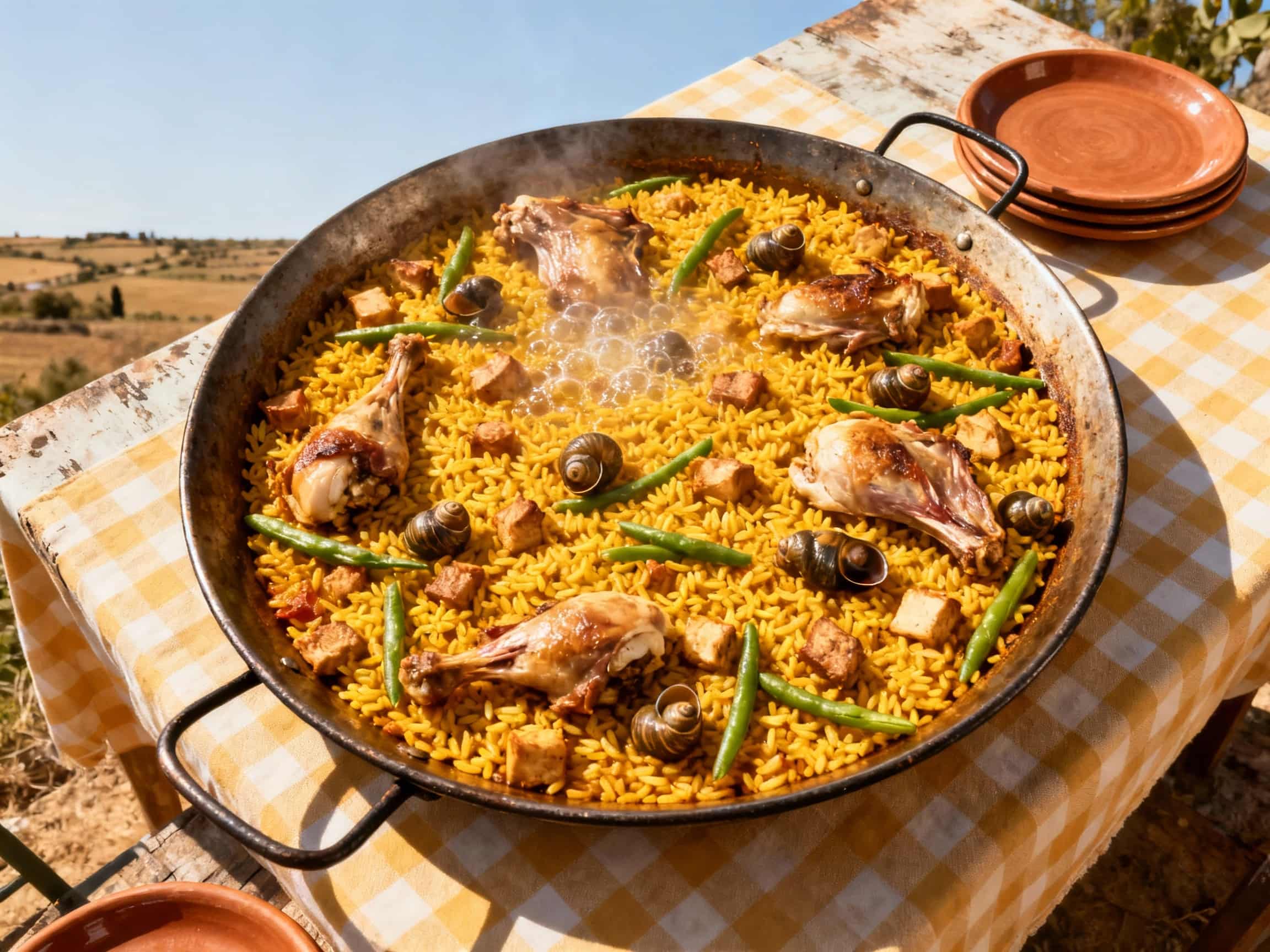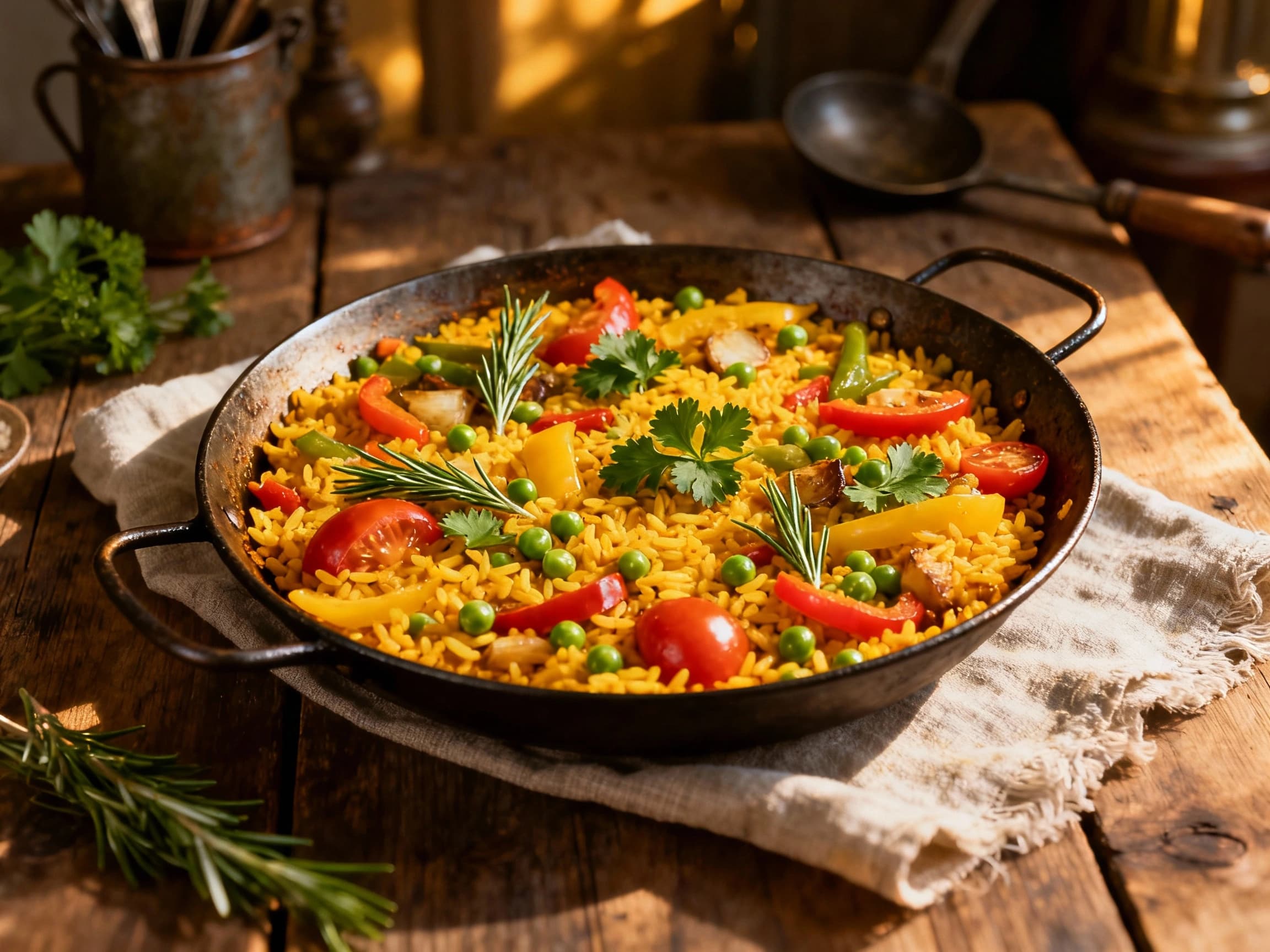
Paella Valenciana
Paella Valenciana
- Country
- Spain
- Region
- Valencia
- Recipes
- 3 Recipes
Dish information
Paella Valenciana, the quintessential rice dish of Spain, hails from the autonomous community of Valencia. Its origins are deeply rooted in the Albufera lagoon area, a fertile wetland where rice cultivation has been practiced for centuries, dating back to the 10th century when introduced by the Moors. Initially, it was a humble meal prepared by farm laborers using readily available ingredients from their surroundings: rice, chicken, rabbit, green beans, and snails. The distinctive wide, shallow pan, the 'paellera', is crucial for even cooking and achieving the coveted 'socarrat' – a toasted rice crust at the bottom. Over time, paella evolved from a simple peasant dish into a celebratory and social meal, often prepared outdoors over an open fire, making it a centerpiece for family gatherings and festivals. The 20th century saw paella gain national and international recognition, with variations emerging across Spain. However, the traditional Valenciana recipe remains a closely guarded culinary heritage in its birthplace. Notable figures like Juan Carlos I, former King of Spain, have publicly enjoyed and praised authentic paella, further cementing its status. The dish is a vibrant symbol of Valencian identity and agricultural history, embodying the flavors of its fertile lands.
Timeline
Introduction of rice cultivation in Valencia by the Moors.
The dish begins to solidify its form with local ingredients like rabbit and beans.
Paella's popularity expands beyond Valencia, becoming a recognized Spanish dish.
Early cookbooks start documenting recipes for Paella Valenciana.
International tourism introduces paella to a global audience.
Efforts to preserve and promote the authentic Paella Valenciana recipe intensify.


